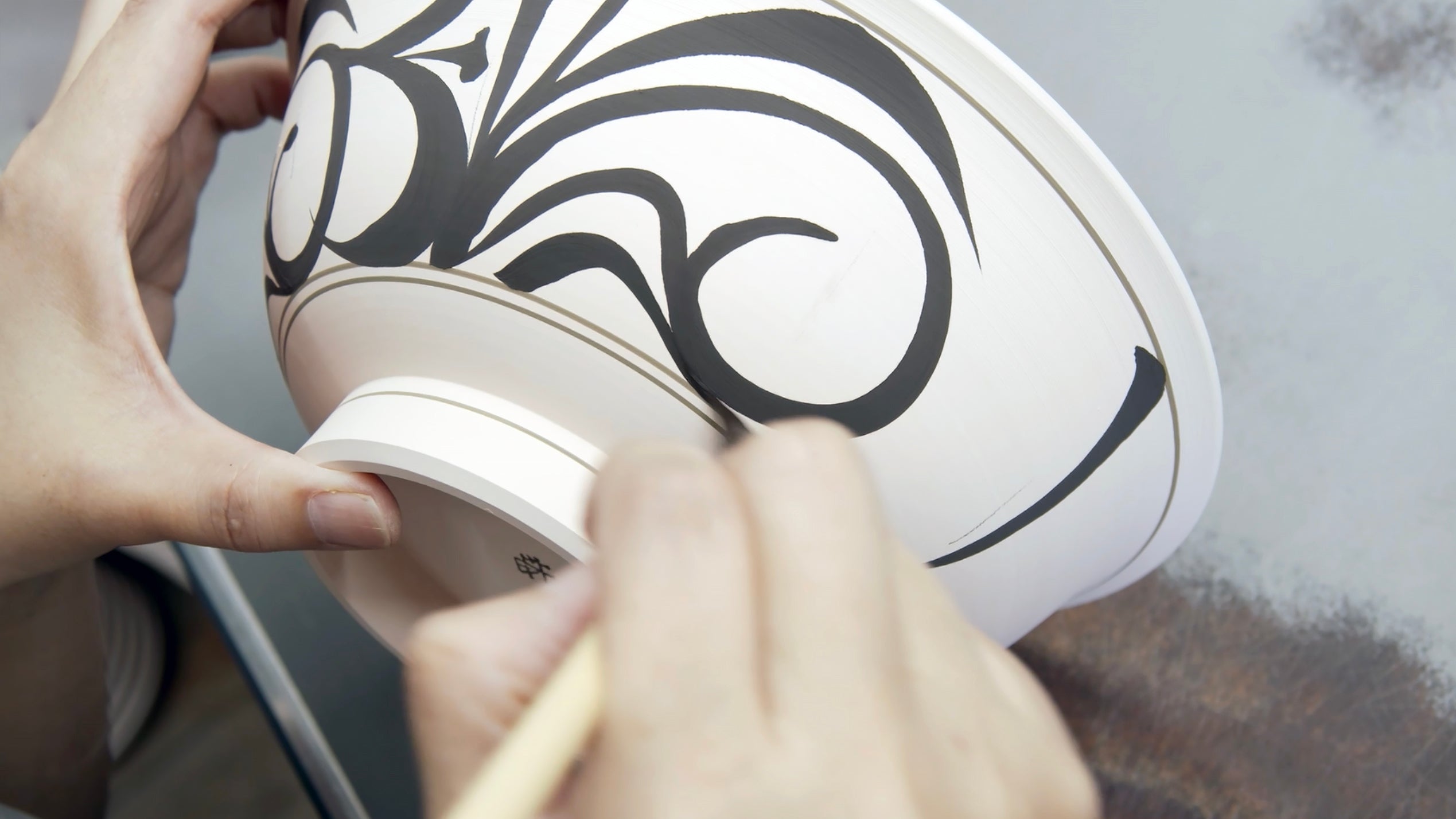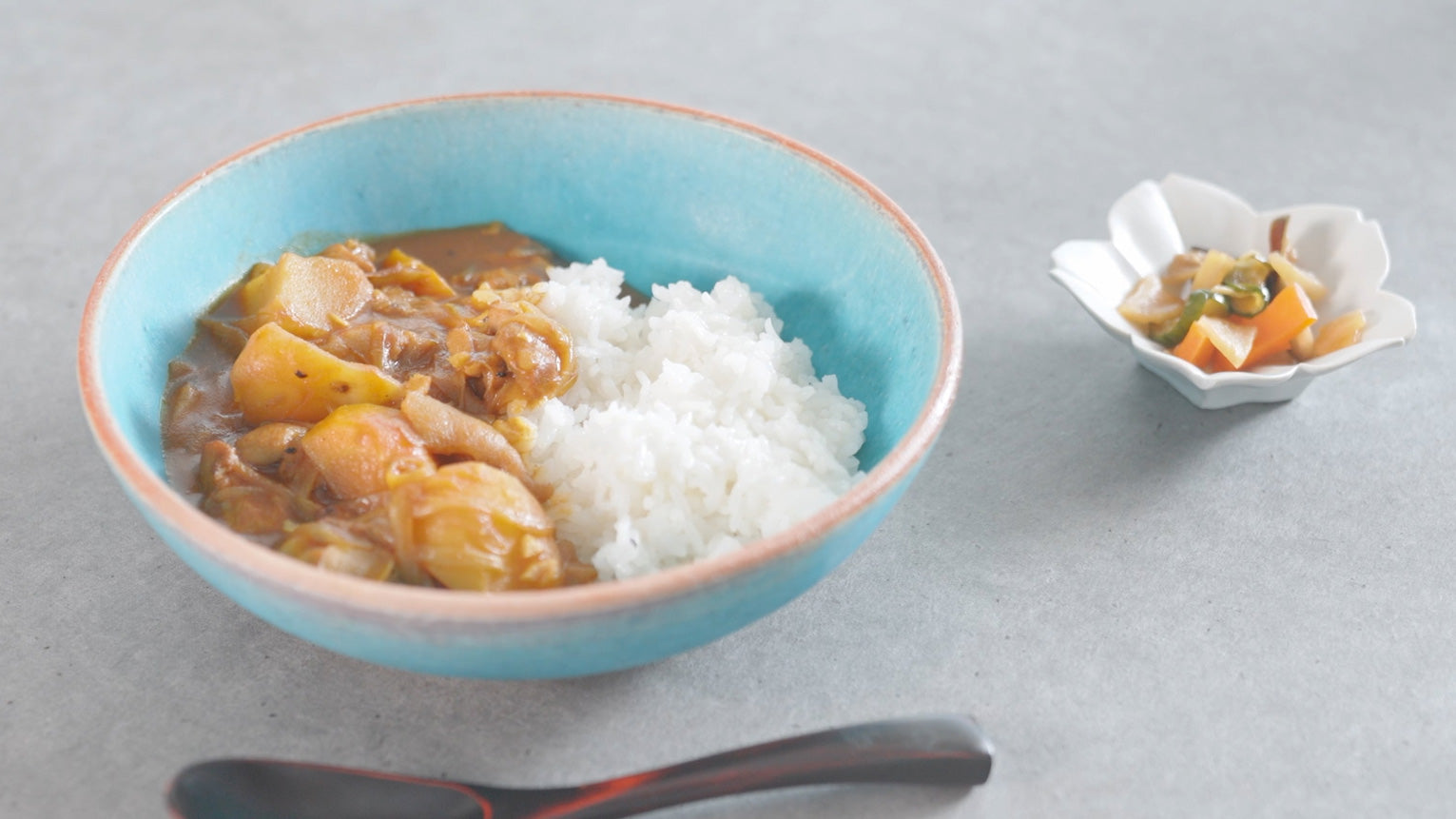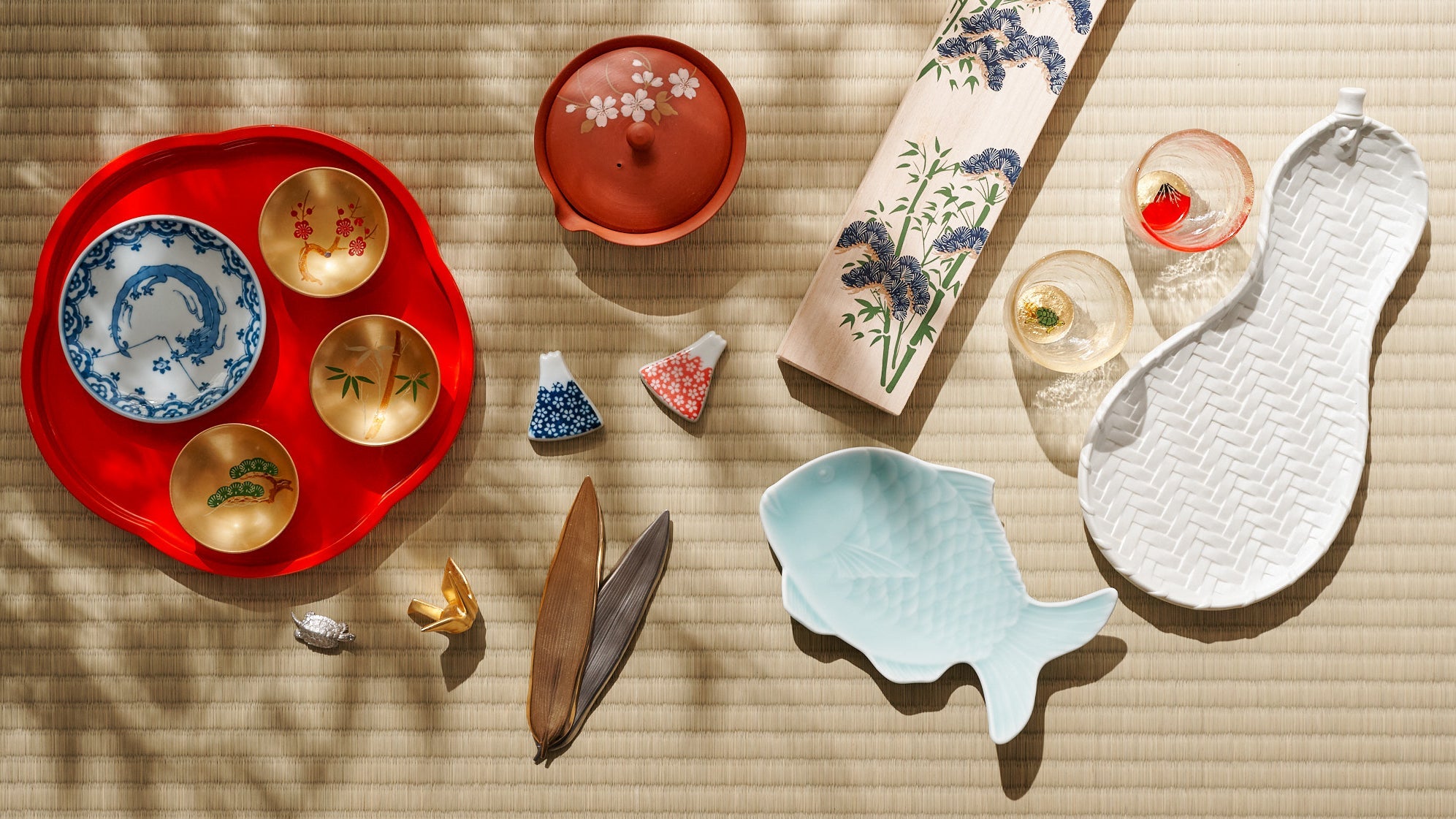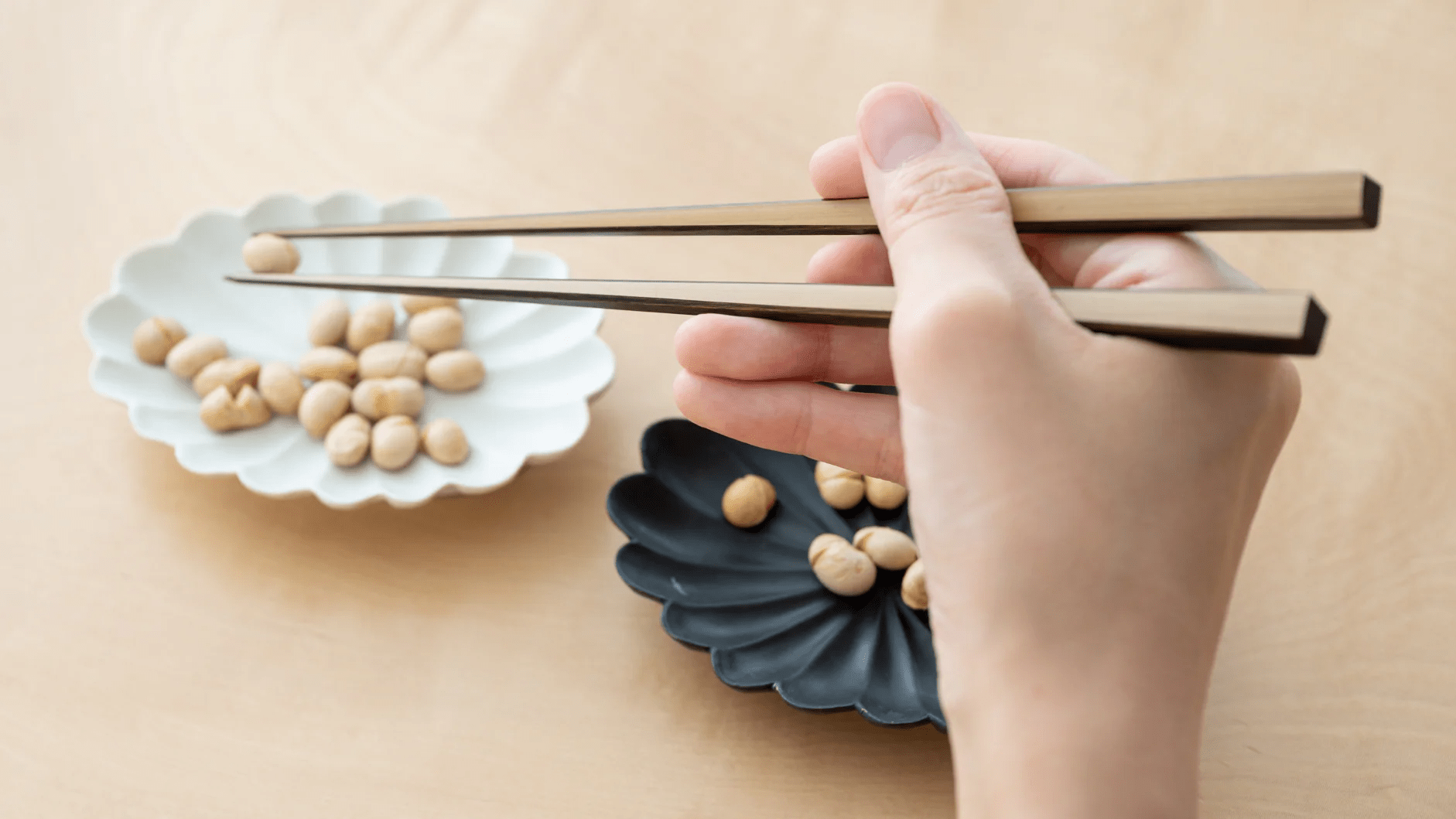
Workshop Visit: Behind the Scenes at Baizan Kiln
Von Team MUSUBI
As we waited in the early morning light, misty clouds still clinging to the hills, craftspeople drove up to the low building one by one. Each entered with a punch of their timecard and a cheerful “Good morning!” before disappearing into the workshop.
Today was a special day: Baizan Kiln was about to unload the kiln, and we at Team Musubi got to see it. Not only that, but we would be shown each part of the ceramics-making process, from wheel throwing to pottery painting to glazing. I couldn’t wait to see how their handmade pieces are created.
Known for their sturdy, daily-use dishes and designs of bold blue arabesques on white porcelain, Baizan Kiln is a representative maker of Tobe ware, a traditional Japanese ceramic craft. Their tableware appears in restaurants—ranging from homey to refined—around Ehime Prefecture and even across Japan.
Read on for a behind-the-scenes look at Baizan Kiln and gain insight into how traditional Japanese ceramics are made. You can also watch the video of this workshop visit and our exclusive interview with CEO Iwahashi on YouTube, here.
Table of contents
Wheel-Throwing: 45 Years of Shaping

Baizan Kiln specializes in porcelain, which comes from pottery stone rather than malleable earth. The stone must be broken up and prepared before it’s ready to work with. But once it is, amazing things take shape.
We make our way over to where a bearded man with glasses sits on a raised wooden platform, a square hole in the center for his feet and the potter's wheel. Clay-splattered lamps watch over the scene as he quickly measures the rim of a vessel with a stick before he spins the wheel once more and makes tiny adjustments between his fingers and a shaping tool then measures again.

It turns out he’s making a lidded bowl. I ask what kind of food it goes well with.
He laughs good-naturedly. “You can use it for anything. That’s up to the user’s imagination.”
Within arm’s reach atop the wooden platform are the potter’s tools of the trade: a bucket of water, a plastic-wrapped mountain of clay, and two completed pots on small stands; four more stands sit empty, ready and waiting. As he minutely adjusts the rim of the bowl, I ask what’s hard about this work.
“Ultimately, it’s getting each item to be the exact same shape.”
He cuts the pot off the wheel—gently yet decisively—leaving a pillar of clay behind that he immediately starts to shape into a new vessel, a technique known as throwing off the hump.
“I use this same lump of clay until I run out,” he says. “When it’s gone, I take more from the pile behind me.” He indicates the plastic-wrapped mound on the work platform. The new clay body takes shape amazingly quickly, mesmerizing to watch. How long has he been doing this?
“Forty-five years,” he says with a laugh, barely pausing in his work as the pot’s shape evens out beautifully under his fingers.
Slip Casting and Trimming: “Must Be About 130 Per Day”

But wheel-throwing, it turns out, isn’t the only way to shape pieces. Moving around the workshop floor brings us to a young woman working with slip casts, a kind of plaster mold.
“We use these for complicated shapes, like our teapots and square vases. This is how it works. We pour in a liquid clay mixture called slurry and set the molds aside for a certain amount of time. The plaster absorbs moisture from the slurry until a layer of solid clay forms around the inner sides of the mold. We pour out the excess slurry, and there you have it—we’re left with the shape we want.”
Just then, a timer goes off and she moves to check each mold. “The hardest part is getting the timing right,” she explains. “If the timing’s off, the thickness of the vase or teapot will be off, too, and we have to start all over.”

That’s not where the molding process ends, though, because each item gets individually adjusted by hand. In the next room, we speak to a man trimming mugs. A haphazard pile of bisqueware keeps him company. Each is unique—they seem to be his reference pieces.

He lets me touch the unfinished mug he’s working on. The clay feels solid, but still damp and malleable. “They break if they’re too hard,” he explains.

“I adjust the inside of a piece with a mechanical lathe, then carve a foot on the mug and adjust the outer shape and rim.” It’s detailed work that leaves the lip looking comfortable to sip from.

I wonder how many he does in a day. “Hmm, must be about 130,” he says casually. 130! I express my amazement, but he just waves modestly and goes on to attach a handle, sticking it on using slip clay.

Once these shaping steps are done, pieces get their first firing—a bisque firing at a relatively low temperature. Then comes the next fun part: Painting the designs.
Painting: Two-Minute Masterpieces

Next, we crowd around the workstation of a ceramics painter, a thirty-year veteran of the company. Neatly organized around her desk are pots containing brushes or gosu, a cobalt underglaze pigment that creates Tobe ware’s classic color scheme of blue and white. Each brush holder, paint cup, and pigment lid is a piece of Baizan Kiln tableware repurposed for painting work, underscoring their durability and practicality.
Using a wheel that she spins manually, the artisan quickly paints the border lines of a donburi bowl, then makes a few rapid marks with a pencil to divide the bowl into segments. Every two segments will contain one full set of Baizan Kiln’s signature arabesque pattern. That’s all the preparation she needs before she picks up her brush again.

“You don’t sketch the arabesques first?” my colleague asks.
“We don’t! There’s no sketch,” she says cheerfully. “This design was thought up by an artisan named Kudo-san for craftspeople experienced with the brush. In it, you apply varying pressures, but each element gets a single stroke. That does away with the time and labor of lifting your brush and bringing it back. It looks nice, it’s fast to do, and ultimately it’s popular, too. It’s a bit hard to paint until you get used to it, but once you do, it’s really quick.”

How quickly? She demonstrates with a calm and smooth hand—not slow, not rushed. “It’s like calligraphy,” she tells us. “There’s a flow to the movement and a stroke order.” She gracefully paints until the whole bowl is filled with arabesques. We’re stunned when we check our timer. She’s done in less than two minutes!
“The other thing that’s amazing about this design is it doesn’t change much whether you paint it on round things or square things. It’s great for customers who want to assemble matching sets of tableware. Also, the number of lines isn’t overdone; it’s just right. This design of Kudo-san’s really is amazing. It would be hard to surpass it.”
Kudo was apparently highly regarded among Tobe craftspeople. He even helped Ohigashi Alyne, an artist from a different Tobe ware kiln, when she was just starting out, encouraging her to keep going in the face of hardship.
Although arabesques are representative of Tobe ware, it seems not all are made equal, and it’s clear there’s an art to getting them just right. This is exactly the kind of design that begs to be passed down to the next generation, shared with and enjoyed by as many people as possible.
Glazing: It’s All About Rhythm
Before these painted ceramics can be fired for a second time, they first must go through one more crucial step: glazing. We head over to the glazing station, where a craftsman stands in front of a wide bucket. His focus is intense as he dips a guinomi sake cup into the beige liquid within. When it comes out, the dark gosu painting has disappeared, almost as if it never existed in the first place.

“This is a transparent glaze,” the artisan explains, “although you can’t tell yet,” as it becomes transparent after firing. “What glazing does is it adds luster, and also makes the item stronger. If you fire it without glaze, it won’t become glossy and it will crack more easily.”
We watch as he glazes a few pieces. He places a cup onto a dipping board, which in this case is a flat mesh plate attached at a 90-degree angle to a long handle. He holds the cup to the mesh plate using a long, thin metal rod that resembles a poker, then dips the cup into the glaze. He smoothly draws the cup forward, pulls it back, then pours excess glaze from the inside of the cup as he pulls it from the bucket. A single light tap against the bucket’s rim finishes the job. A second later, the cup is already dry enough to pick up without damaging the glaze.

He tells us, “Pieces like these that have been fired once are called bisque ware. If you look at bisque ware under a microscope, you’ll see the surface has little holes, like a sponge. Thanks to that, it sucks up the glaze and makes it stick.” No wonder it dries so fast.
“The hardest part,” he continues, “is the glazing speed. If you go too slow, too much glaze will stick and the pattern that we went to the trouble of painting will come out hazy. But too thin and the paint will burn and turn black, plus the item will crack and break easily. Glazing with a consistent rhythm is difficult.” And crucial!
The second firing is done at a high temperature. For pieces painted solely with underglaze, this is the final step, but those painted with overglaze enamel—such as Baizan Kiln’s red-accented pieces—return to the painting room for decoration before being fired a third time at low temperature.
Kiln Unloading: Speedy Harmony
Though each of the artisans we met had their own specialty, everybody came together for the big event of kiln unloading.

For most of their work, Baizan Kiln uses front-loading electric shuttle kilns. Each kiln contains a wheeled platform, or shuttle, that can be rolled in and out on a track, making it easier to load and unload industrial quantities of ceramics. Around three meters (ten feet) tall on the inside and bigger than most elevators, the kiln being unloaded today contained thirty-six tightly-packed shelves of ceramics stretching at least two meters (6.6 ft) deep. It was all hands on deck.

In the crowd, we spot the faces of everyone we would speak to that day: painters, slip casters, the wheel thrower, the detail finisher, and the glazer—even Iwahashi, the CEO, a tiny older lady who nevertheless seems as tough as nails.
The shapers and glazers climb onto the shuttle to pass bowl after bowl into the waiting arms of several of the painters, who speedily fill wooden boxes, then run them downstairs to a storage area. Even more staff wait there for sorting and stacking work, separating designs at a glance and lining them up in neat piles. The wooden boxes just keep coming. Back upstairs, each element of the shelves has to be broken down, too: the firebricks and shelf dividers gathered and stacked and the shelves themselves—sturdy fireproof boards—put away.

It’s extremely fast and efficient. One is tempted to call it a well-oiled machine, except that this level of friendly cooperation is uniquely human. The level of teamwork is impressive. After barely half an hour, the hundreds of ceramics are neatly stacked away, and the kiln shuttle sits empty and waiting for the next kiln firing.
We said our goodbyes that day with deep gratitude in our hearts for the craftspeople who so generously showed us how they work and gave us this precious glimpse into how traditional ceramics continue to be made today.
Beyond the Kiln

The freshly fired stacks of donburi bowls bring to mind the kitchen shelves of restaurants, and that is exactly where we encountered Baizan Kiln next. Back at Matsuyama Airport, hungry after a full day of conducting interviews and selecting product inventory, we breathed a sigh of relief as we were served up heaping bowls of piping hot udon—in one of Baizan Kiln’s signature donburi bowls!
The flared rim perfectly cradled the fried toppings while the wide body held an ideal quantity of broth. As I slurped up noodles, I thought again of each person who contributed to this piece, and therefore to my meal—the potter who threw it on the wheel, the glazer, the painter. I almost felt like I’d met local celebrities. Though their contributions usually remain behind the scenes, each individual works in harmony to produce something beautiful, durable, practical—a symphony of Japan’s food and ceramics culture, summed up in a single object.











Hinterlasse einen Kommentar
Diese Website ist durch hCaptcha geschützt und es gelten die allgemeinen Geschäftsbedingungen und Datenschutzbestimmungen von hCaptcha.